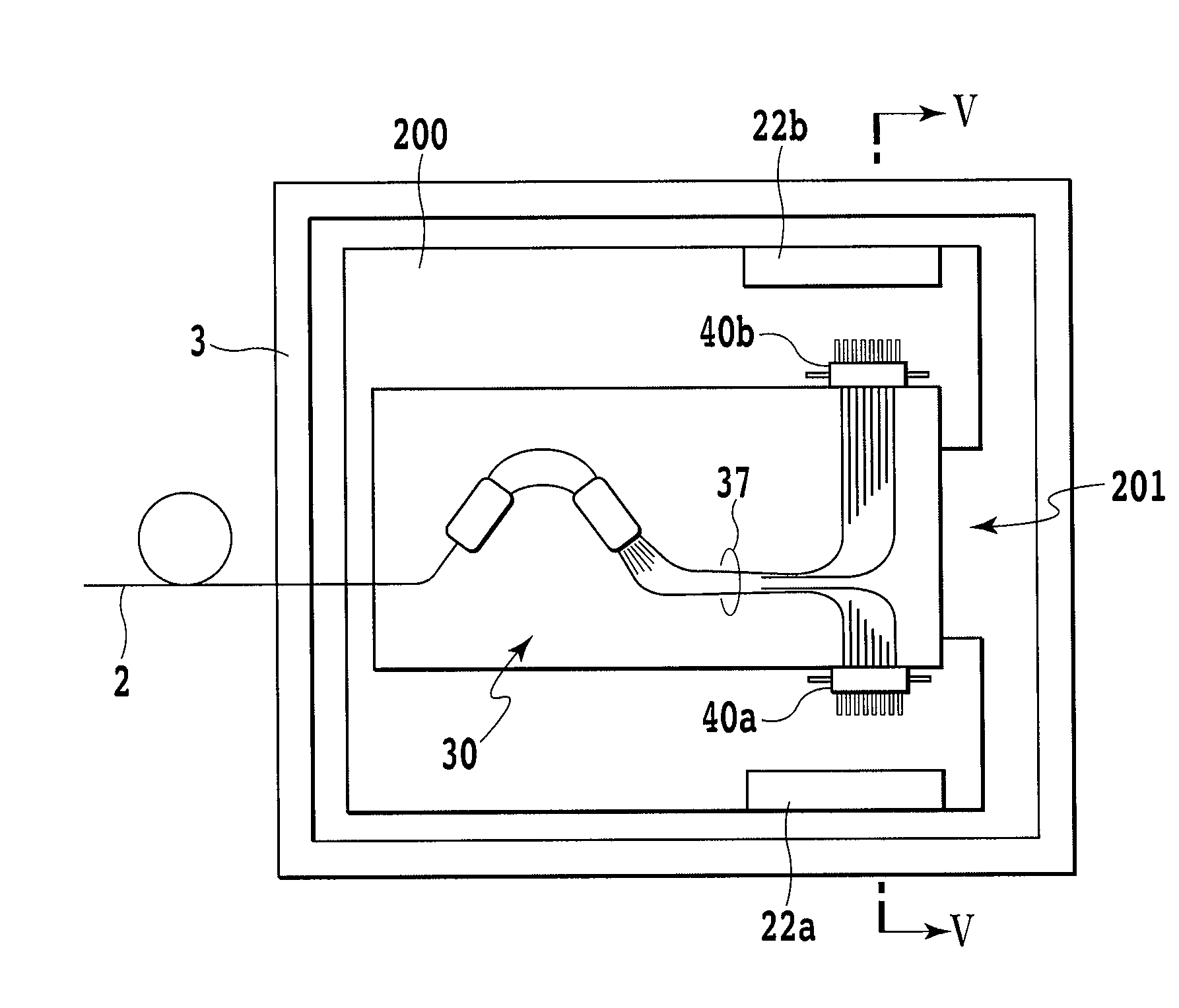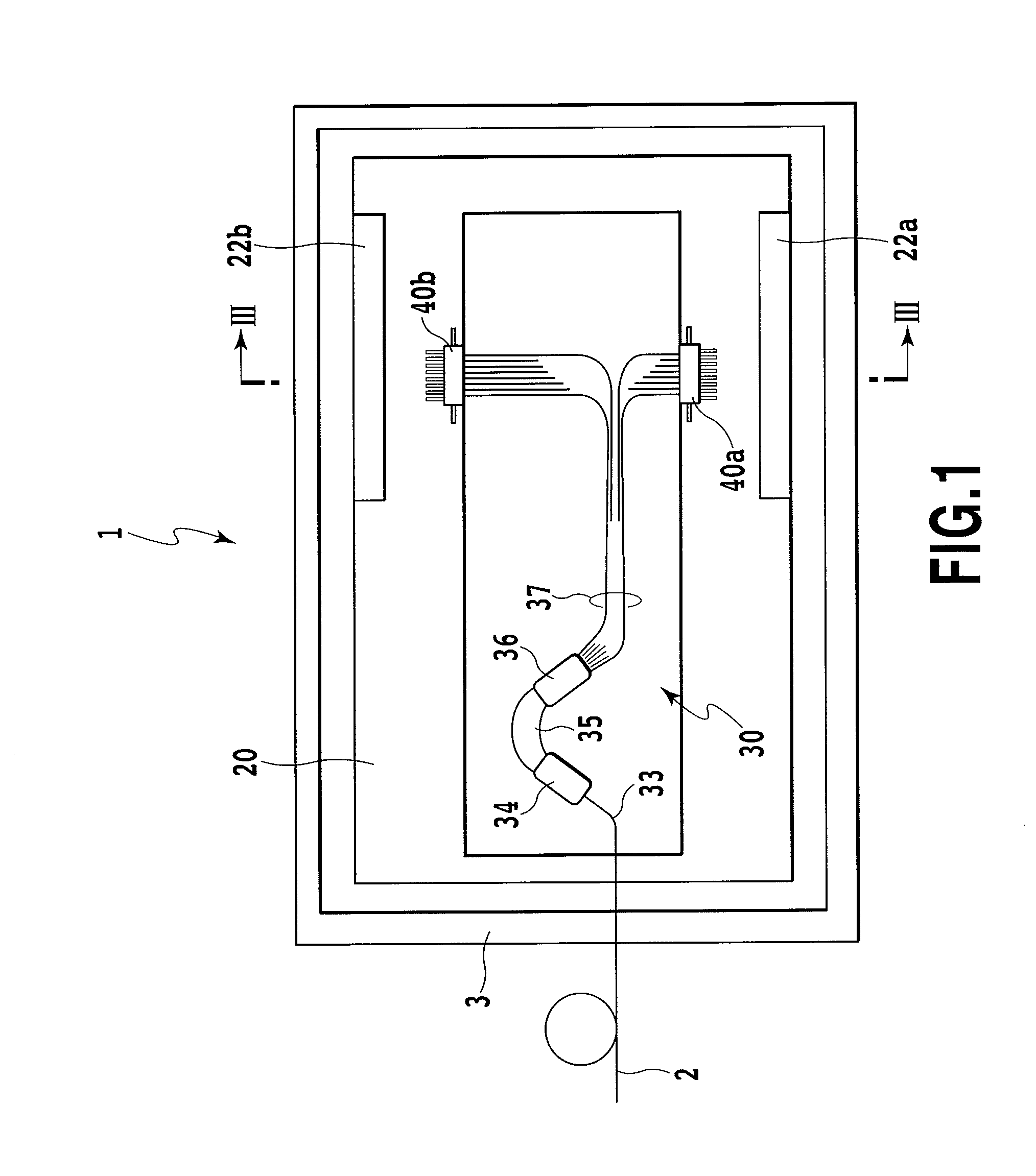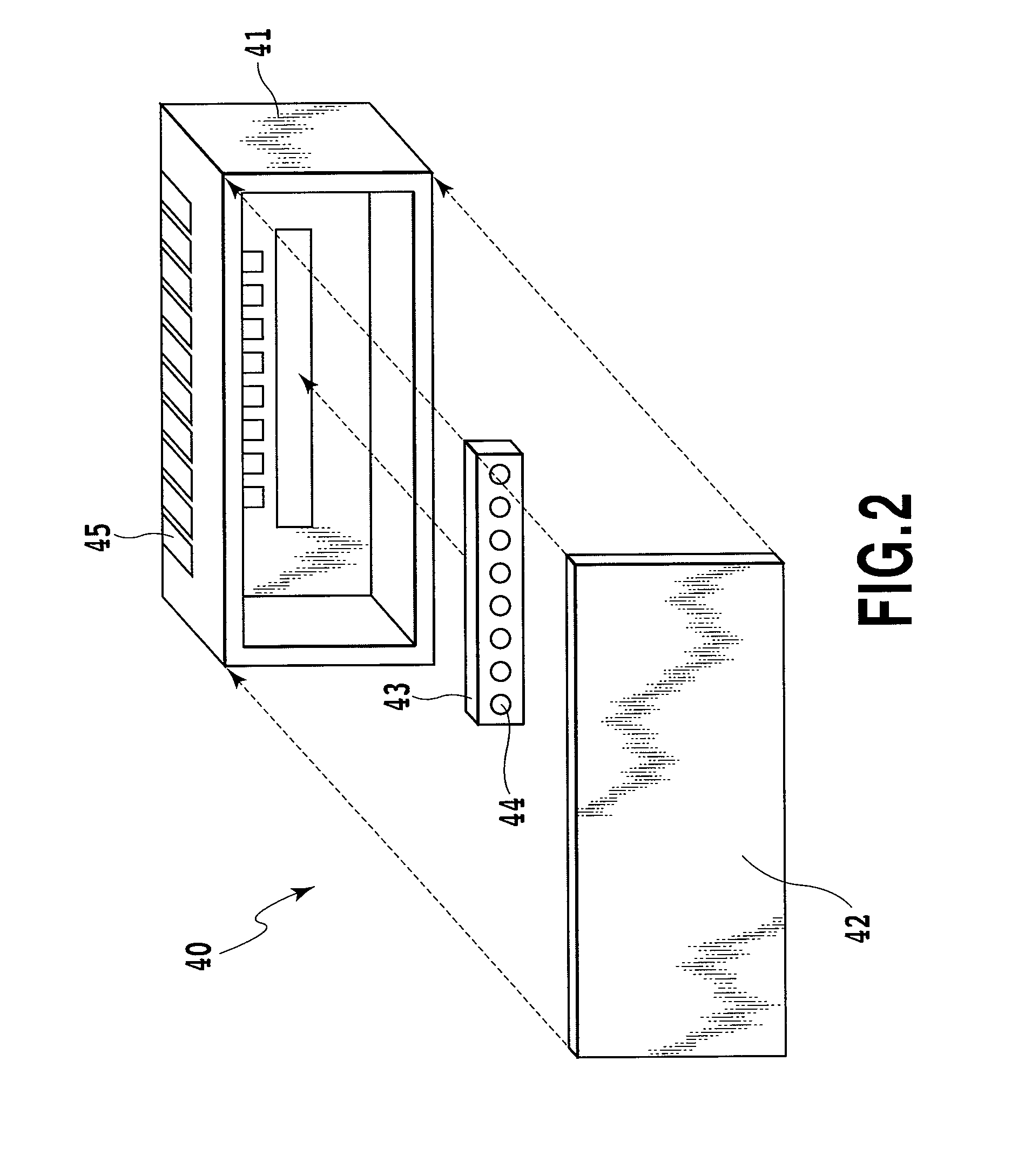Optical module
a technology of optical modules and optical elements, applied in the field of optical modules, can solve problems such as fluctuation of characteristics, and achieve the effect of reducing the stress applied to the packag
- Summary
- Abstract
- Description
- Claims
- Application Information
AI Technical Summary
Benefits of technology
Problems solved by technology
Method used
Image
Examples
embodiment 1
[0044]FIG. 4 illustrates a configuration of an optical module according to Embodiment 1 of the present invention. The optical module 1 is a 16-channel optical power monitor that has the PLC 30 having an AWG having 16 output waveguides 37. An end face of the PLC 30 is joined to the two PD packages 40a and 40b storing therein the 8-channel PD array 43. The optical module 1 is structured so that the printed circuit board 200 including the PLC 30, the PD packages 40a and 40b, and the connectors 22a and 22b is provided in the housing 3. A wavelength division multiplexing signal of 16 waves input from the optical fiber 2 is branched by the AWG to optical signals having individual wavelengths and the signals are received by the light-receiving faces of the individual PDs stored in the PD packages 40a and 40b.
[0045]FIG. 5 illustrates a method of fixing the PLC and the PD packages according to Embodiment 1. FIG. 5 is a cross-sectional view taken along V-V in FIG. 4. The output waveguide 37 ...
embodiment 2
[0048]FIG. 7 illustrates a configuration illustrating an optical module according to Embodiment 2 of the present invention. The optical module 1 is a 16-channel optical power monitor that has the PLC 30 having an AWG having 16 output waveguides 37. An end face of the PLC 30 is joined to the two PD packages 40a and 40b storing therein the 8-channel PD array 43. The optical module 1 is structured so that the printed circuit board 200 including the PLC 30, the PD packages 40a and 40b, and the connectors 22a and 22b is provided in the housing 3. A wavelength division multiplexing signal of 16 waves input from the optical fiber 2 is branched by the AWG to optical signals having individual wavelengths and the signals are received by the light-receiving faces of the individual PDs stored in the PD packages 40a and 40b.
[0049]A cross-sectional view taken along VIII-VIII of FIG. 7 is identical as that of FIG. 3. Embodiment 2 is different from the conventional optical module in the printed ci...
embodiment 3
[0050]FIG. 8 illustrates the configuration of an optical module according to Embodiment 3 of the present invention. The optical module 1 is a 16-channel optical power monitor that has the PLC 30 having an AWG having 16 output waveguides 37. An end face of the PLC 30 is joined to the two PD packages 40a and 40b storing therein the 8-channel PD array 43. The optical module 1 is structured so that the printed circuit boards 220a and 220b respectively including the PLC 30, the PD packages 40a and 40b, and the connectors 22a and 22b are provided in the housing 3. A wavelength division multiplexing signal of 16 waves input from the optical fiber 2 is branched by the AWG to optical signals having individual wavelengths and the signals are received by the light-receiving faces of the individual PDs stored in the PD packages 40a and 40b.
[0051]A cross-sectional view taken along V-V of FIG. 8 is identical as that of FIG. 5. Embodiment 3 is different from Embodiment 1 in the printed circuit bo...
PUM
 Login to View More
Login to View More Abstract
Description
Claims
Application Information
 Login to View More
Login to View More - R&D
- Intellectual Property
- Life Sciences
- Materials
- Tech Scout
- Unparalleled Data Quality
- Higher Quality Content
- 60% Fewer Hallucinations
Browse by: Latest US Patents, China's latest patents, Technical Efficacy Thesaurus, Application Domain, Technology Topic, Popular Technical Reports.
© 2025 PatSnap. All rights reserved.Legal|Privacy policy|Modern Slavery Act Transparency Statement|Sitemap|About US| Contact US: help@patsnap.com



